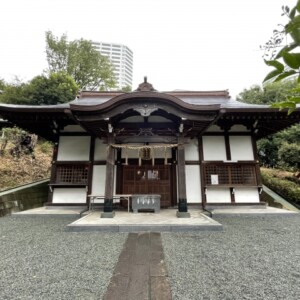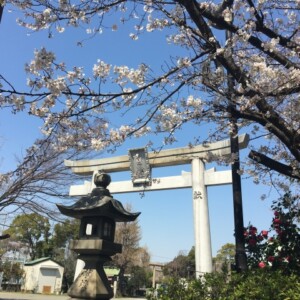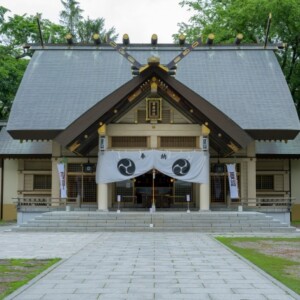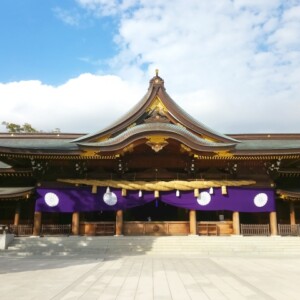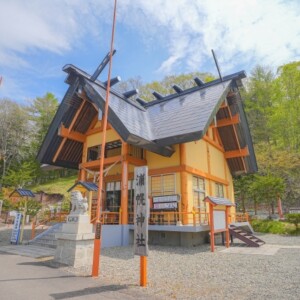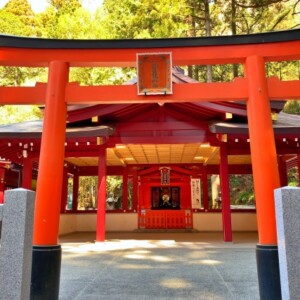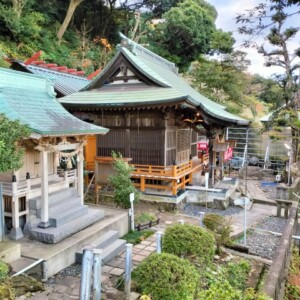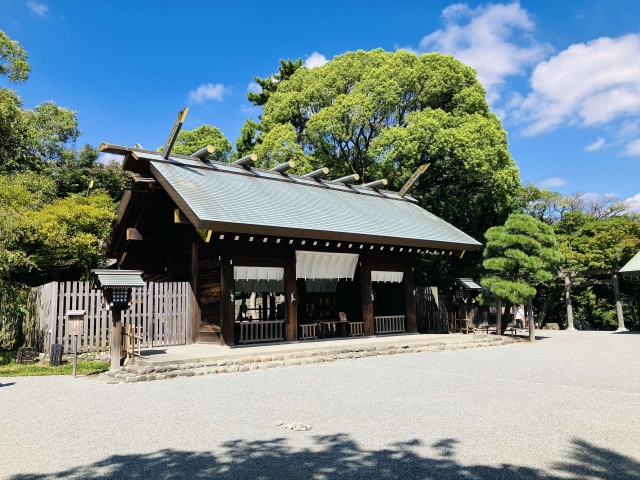
Iseyama Imperial Shrine|Complete guide to the history, highlights, and worship information of the historic shrine that serves as Yokohama’s chief Shinto shrine
Located on a hill in Minatomirai, Yokohama, the Iseyama Imperial Shrine is known as the “Ise Shrine of the Kanto Region” and has a long history that dates back to the Meiji Era when the port of Yokohama was opened to foreign trade. The shrine is dedicated to Amaterasu Omikami, the deity of the shrine, and as the guardian deity of Yokohama, it is a sacred place that attracts the faith of many people.
Outline and basic information on Iseyama Imperial Shrine
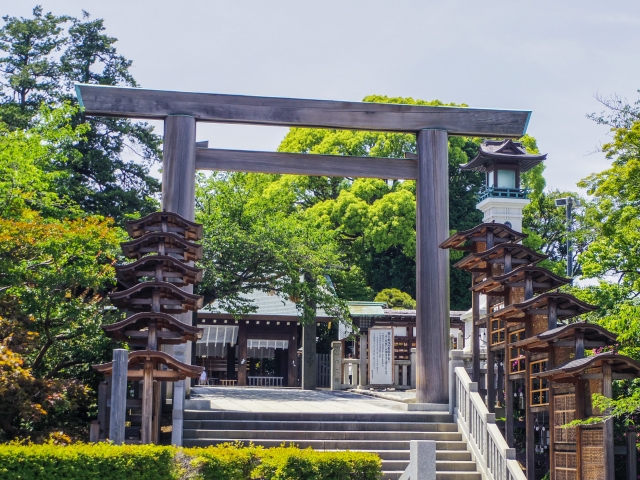
Iseyama Imperial Grand Shrine is a Shinto shrine located in Miyazaki-cho, Nishi-ku, Yokohama City, Kanagawa Prefecture, founded in 1870 (Meiji 3). It is a historic shrine, built in the early Meiji period (1868-1912) with government funds, and occupies an important position as the head shrine of Kanagawa Prefecture and the general Shinto shrine of Yokohama. The shrine grounds offer a panoramic view of the Port of Yokohama and the cityscape, and are a precious space that maintains a sense of tranquility and sanctity despite its location in an urban area.
History and Origin
The founding of the Isezan Imperial Shrine was deeply connected to the opening of the port of Yokohama. Yokohama, which had been a single cold village, became an opening port and rapidly developed as a trading city. Kanagawa Prefecture considered it necessary to establish shrine beliefs to serve as a spiritual pillar for Yokohama’s contact with foreign cultures, including Christianity.
Therefore, in April of the same year, Kanagawa Prefecture relocated the Shinmei-sha shrine on the mountain of Ise-no-mori on the coast of Tobe Village, which was said to have been recommended by the provincial governor of Musashi Province from Ise Jingu Shrine by imperial order, to its current location on Mt. Noge in April of the same year. This relocation created a new shrine on a hill overlooking the port of Yokohama and provided emotional support for the people of the rapidly growing city.
Interestingly, those involved at the time were so eager to improve the status of the shrine that in 1875 (Meiji 8), Kanagawa Prefecture petitioned the Grand Council of State to elevate the Iseyama Imperial Shrine to the status of a separate shrine of the Ise Jingu. The application was ultimately denied, but it is clear that the shrine was considered to be of such importance.
Deities and Benefits
The deity of Iseyama Imperial Shrine is Amaterasu. She is the ancestress of the Imperial Family, who gave our ancestors ears of rice and decreed that rice should be cherished.
Amaterasu’s blessings are diverse. We can pray for protection in all aspects of our lives, such as family safety, business prosperity, traffic safety, good fortune, safe delivery, marriage, academic success, health, good luck, and the fulfillment of our wishes. This deity, which symbolizes light and prosperity in particular, is said to bestow a wide range of blessings, including domestic safety, physical health, academic achievement, and traffic safety.
Also located within the precincts of the shrine is Kinezuki-no-miya, which enshrines Toyokehime no Mikami, Susao no Mikoto, Okuninushi no Mikoto, Ubamo no Mikoto, and Soko, Naka, and Kamitsutsu no Mikoto (the three pillars of Sumiyoshi). Toyokehime-no-okami was worshipped as the guardian deity of silk and silkworms in the early Meiji period, especially by those involved in sericulture.
Highlights and Features of Iseyama Imperial Shrine
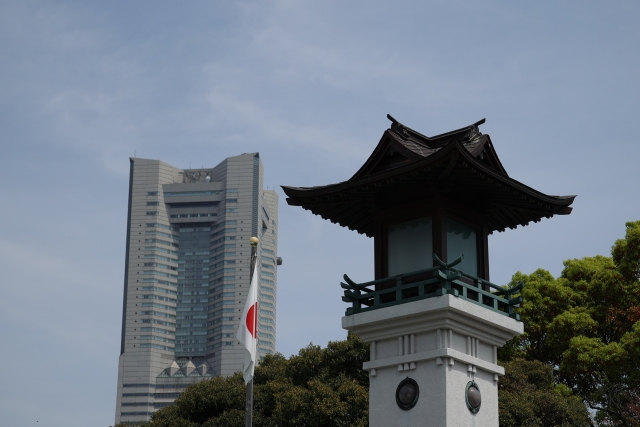
Isezan Imperial Grand Shrine is a shrine with many highlights, where historical buildings and beautiful nature are in harmony. The precincts of the shrine are approached by a long stone stairway, with deep stone steps and a wide landing. Several sets of this combination are crossed, gently ascending to higher ground. Worshippers can head toward the shrine while purifying their minds step by step.
Architectural and Structural Attractions
The present shrine pavilions were rebuilt after the Great Kanto Earthquake. The old pavilions were all destroyed by the disaster of the Great Kanto Earthquake, and the present pavilions were newly restored and built in 1928. The present main hall was newly restored in 1928. The beautiful Shinmei-zukuri style of the main hall is a solemn structure influenced by the Ise Jingu Shrine.
There are two torii gates on the approach to the shrine. The first torii gate on the main approach was donated by Mr. Bungoro Aikawa of Kanazawa, Yokohama in 1970 to commemorate the 100th anniversary of the shrine’s founding, and is made of all cypress. Interestingly, we call it “Ninotorii” and the numbering is reversed.
Nature and Scenic Beauty
The shrine grounds are surrounded by lush greenery despite its location in the heart of the city, with sacred trees over 100 years old and a garden filled with flowers of the four seasons. As is evident from the fact that cherry blossoms are the company crest, the grounds are decorated with beautiful cherry blossoms in the spring.
Because of its elevated location, the temple grounds offer a view of the Port of Yokohama and the Landmark Tower, and the view of the Landmark Tower from the temple grounds is a popular spot for worshipers. This location makes it an ideal place to visit when you want to purify your mind and body away from the hustle and bustle of the city.
Cultural Properties and Important Facilities on the Temple Grounds
The temple grounds are dotted with facilities of historical value. In particular, the “Yokohama Iseyama Monument” erected by Kanagawa Prefecture in January 1874 on the Omotesando of the Iseyama Imperial Shrine is inscribed with the words “Jingu Bengu,” and the full text of the monument was published as an appendix in the February 23 issue of the Yokohama Mainichi Shimbun No. 968 of the same year. The monument still remains next to the Otorii gate on the Omotesando approach to the shrine, and is a valuable cultural asset that tells the history of the Meiji era.
In addition, the shrine pavilion to the left of the main shrine building, the only one in the Shinmei-Hinoki style, is an architecturally valuable structure of the Kine Shrine. Other structures in the precincts of the shrine can be seen to the left of the torii gate and over the wooden fence. This shrine is not shown on the “precinct guide map. When we asked at the awarding office during our last visit, we were told that it is a water god shrine, etc. Some small shrines are hidden away and provide enjoyment in exploration.
Guide to Prayer and Worship
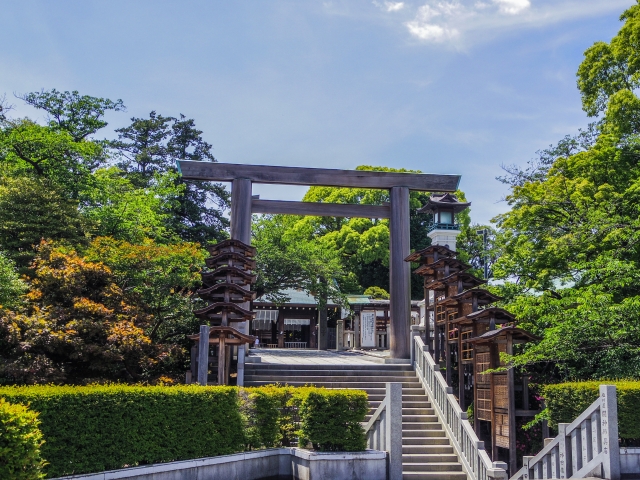
The Iseyama Imperial Shrine is visited by many worshippers every day who come to pray with all their hearts. Regular prayers are held from 9:00 a.m. to 5:00 p.m., and prayers are also held in front of the shrine for celebrations such as first shrine visit and 753 mairi, and for special requests such as safe delivery, prevention of bad luck, and safety of the family. Prayers are accepted from 9:00 a.m. to 4:30 p.m.
Worship Etiquette and Manners
It is important to observe the correct manners and etiquette for worshipping at the Iseyama Imperial Shrine. Wash your hands and rinse your mouth at the hand-watering ritual. Washing hands and rinsing mouth is a simplified form of misogi. Please visit the shrine with a clean and fresh mind and body.
The basic flow of the ritual is as follows. First, hold the ladle in your right hand to cleanse your left hand, then hold the ladle in your left hand to cleanse your right hand. Then hold the ladle in your right hand again, rinse your mouth with water from the ladle in your left hand, and finally cleanse the handle of the ladle and return it to its original position.
As the shrine informs us that we should offer “gratitude” with a clean heart before the shrine, it is important to express not only our wishes but also our daily gratitude during the visit to the shrine.
Annual & Seasonal Events
Forty-six annual festivals are held at the Iseyama Imperial Shrine, including the annual festival on May 15 and the Shinnae Festival on November 23. The Monthly Service is held at 8:30 a.m. on the 1st and 15th of every month except January 1 and May 15.
The main annual events are the New Year’s Day Festival on January 1, the Setsubun Festival on February 3, the Kigen Festival on February 11, the Harumae Ceremony on the day of the Spring Equinox, and the regular festival on May 15, which commemorates the founding of the Iseyama Imperial Grand Shrine on April 15 in the third year of the Meiji Era.
Respect-for-Senior-Citizens Day is now observed on the third Monday of September, but was originally set on September 15. The shrine holds the Keiro Matsuri to honor the elderly and celebrate their longevity on this day, as well as various other festivals throughout the four seasons up to the Shinnae Matsuri on November 23.
Of particular note are the festivals held at the Kitsukinomiya regent shrine. Kitsuki-no-mikoshi, the deity of the Noge area, is also enshrined at Kitsuki-no-miya, and a portable shrine is carried out to the surrounding neighborhoods. The once-every-two-year United Mikoshi Procession, in which seven portable shrines gather in the precincts of Iseyama Imperial Shrine for a heroic parade, is a particularly attractive community-based festival.
Red Seal and Good Luck Charm Information
At the Iseyama Imperial Grand Shrine, visitors can obtain a red seal that features the company crest of cherry blossoms on a red seal that reads “Iseyama Imperial Grand Shrine. Red seals are available at the awarding office on the right side of the main shrine building.
In 2020, a limited number of red seals will be available to commemorate the 150th anniversary of the shrine’s founding. In the summer of the same year, a limited number of “Natsu-mode” (summer visit) red seals were also made available. Iseyama Imperial Shrine is also participating in the Keikyu Summer Pilgrimage Campaign.
Regarding amulets, the following is a partial list of awards distributed at the shrine. As stated, there are priests and priestesses at the distribution center, so please feel free to consult with them. This is an amulet for physical health. The two types of designs are original to the shrine, and other unique items are also available.
Modern amulets, such as the cute Kitty-chan amulet with a Yokohama-inspired pattern, are also popular and loved by worshippers of all ages. The omifuda are distributed in the form of a small omifuda (small marijuana) from the Jingu shrine in Ise for 1,500 yen and an omifuda from the Iseyama Imperial Shrine for 1,500 yen.
Access and Information

Isezan Imperial Shrine is located in a special environment, on high ground, yet easily accessible from the center of Yokohama. It is conveniently accessible by train and is within walking distance of several stations.
Transportation Access
Access by train is a 10-minute walk from Sakuragi-cho Station (JR and municipal subway lines), a 10-minute walk from Hinodecho Station (Keikyu Line), and a 15-minute walk from Minatomirai Station (Minatomirai Line). The most accessible station is Sakuragi-cho Station, served by the JR Negishi and Tokaido Lines and the Yokohama Municipal Subway Blue Line.
From Sakuragicho Station, it is a 10-minute walk. It is difficult to find if you walk toward Isezan Imperial Shrine, as it is a winding road, but we advise that it is easier to find if you walk toward Naritasan Yokohama Betsuin Temple. From Sakuragicho Station, walk up Momiji-zaka Hill, cross a traffic light on the way and walk up the hill for a little while, and you will see a landmark sign. The climb up to the Isezan Imperial Shrine is 280 meters, and from here the real climb begins.
It is also accessible by bus: a 5-minute walk from the Momiji-zaka bus stop and a 5-minute walk from the Tobe 1-chome bus stop.
If coming by car, it is 5 minutes from the Minatomirai ramp on the Yokohane Line of the Metropolitan Expressway, or 7 minutes from the No. 3 Bando Bridge ramp from the Kariba Interchange on the Tomei Expressway, Hodogaya Bypass, and Yokohama-Yokosuka Road. Please note, however, that you cannot enter the parking lot from the Prefectural Youth Center or Prefectural Library side.
Hours of Admission, Fees, and Parking Information
There is no admission fee to the Iseyama Imperial Shrine, and anyone is free to visit. The shrine office is open from 9:00 a.m. to 5:00 p.m., and the distribution hours are from 8:30 a.m. to 7:00 p.m.
If you wish to pray, prayers are generally accepted on the day of the visit, and there is no need to make a reservation in advance. However, if you wish to pray for a special prayer, you need to make a reservation. Prayers are accepted from 9:00 a.m. to 4:30 p.m.
As for parking, free parking is available for visitors, and approximately 40 cars can be parked. However, reservations cannot be made for the shrine parking lot. Please note that the parking lot is very crowded from September to February. Public transportation is recommended during peak seasons, such as year-end and New Year’s holidays, when the parking lot may be unavailable.
As advised that comfortable walking shoes are recommended as there is a slope and stairs to climb, we recommend that visitors wear comfortable clothing as access to the shrine grounds requires climbing stone steps.
<Address> 64 Miyazaki-cho, Nishi-ku, Yokohama City, Kanagawa Prefecture, 220-0031
Reference site
Official website of Isezan Imperial Jingu Shrine, Yokohama’s main Shinto shrine: https://www.iseyama.jp/



